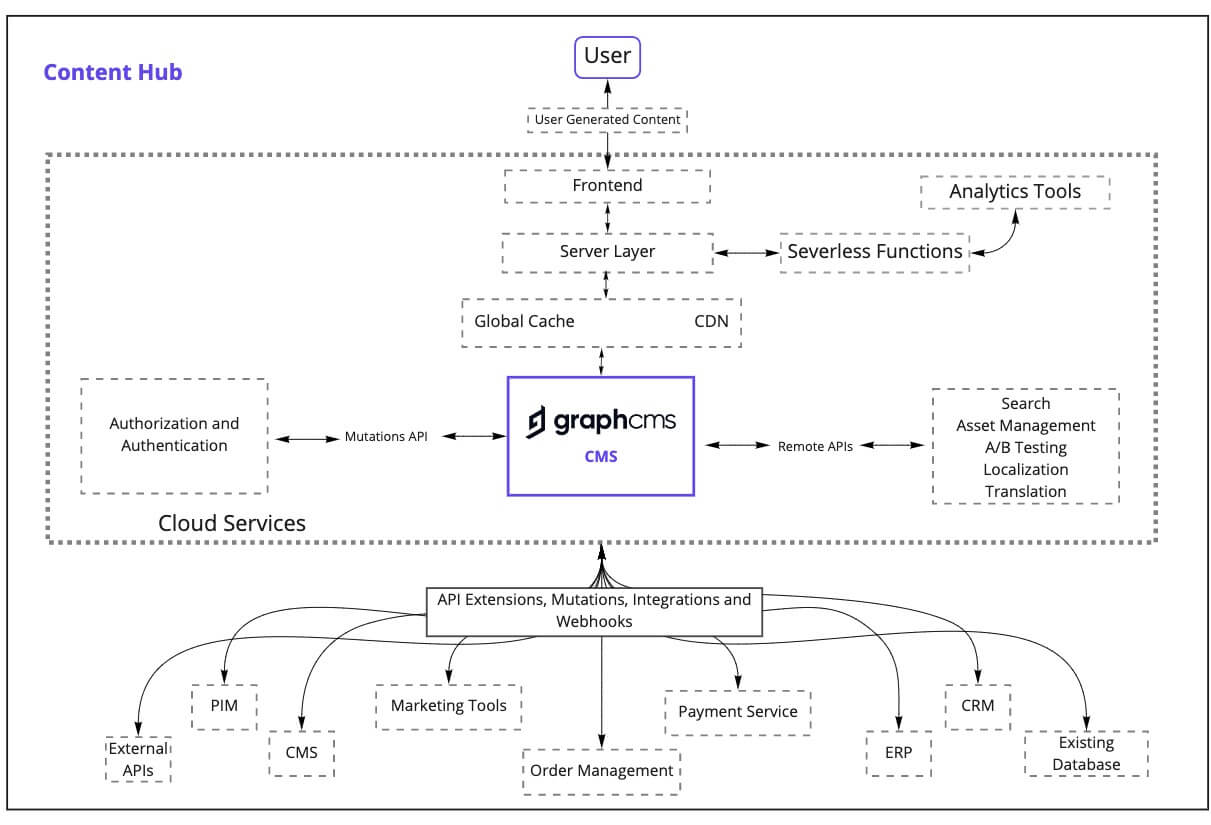Architectures for Federated Content Hubs
Content hubs enable brands to become a resource for their users - building a content-rich experience.
Content hubs enable brands to become a resource for their users. External content hubs can bring content together from a variety of sources to build a content-rich experience. As content hubs become a tool to give more information and context around a broader topic, they can also be used to meet a new consumer need.
Content hubs become a way for brands to build consumer trust and become more than just an eCommerce shop, application, or marketing website. With the rise of user-generated content, teams are no longer limited to the capacity of their own team, but can also source content from their users, giving themselves greater variety and creativity.
By implementing a modular, API-first tech stack, teams are to pull in federated content from external sources, find the balance between creating new content from scratch and utilizing existing content from monolith systems, and launch an early version of their content hub while iterating later to build a more robust experience.
Teams are able to hold user experience at their core while still working flexibly with technologies and tools that meet the needs of the day. In taking advantage of best-of-breed services teams can have the experience of a completely custom tech stack, without having to build it in-house.
During the beginning phases of creating a modular, API-first tech stack, it can be difficult to see the big picture of how all of the pieces work together. That’s why we have created some high-level architectures which will give you a place to start your evaluation and guide you on some things to consider when building a modular, API-first tech stack.
ArchitectureAnchor
View the higher resolution version here.
Architecture HighlightsAnchor
Global CacheAnchor
Global caching improves performance by storing copies of files or data in regions that are globally distributed. Future requests of the same data are pulled from the region closest to the request enabling the data to load more quickly. This can be particularly helpful for content that is accessed repeatedly. Cloudflare is a popular option due to its robust network of data centers.
SearchAnchor
Adding in search functionality in your final digital product can be a great way to improve user experience and ensure that your content is more visible. There are several popular solutions for Search including Yext or Elasticsearch.
Asset ManagementAnchor
Asset Management tools make it easy to upload, transform, manipulate assets for your website or digital project. These services give users more control over their assets, a critical component to any modern digital project. Popular tools for asset management include Filestack and Fastly.
Localization and TranslationAnchor
Localization and translation services help digital products serve the needs of a globalized user base. These tools range in their specific product offering; however, they either allow for easy translation or localization of content. This can be particularly helpful if localization is being outsourced or are looking to use an AI translation tool.
CRMAnchor
A Customer Relationship Management (CRM) tool is a tool that is used to better oversee interactions with users and to streamline relationship building. CRMs store and organize contacts, user interactions, and deal progression for sales teams. Tools such as Salesforce, Hubspot, and Pipedrive are popular depending on teams’ needs.
ERPAnchor
An ERP is a software that helps companies manage business processes. These processes can range from accounting to human resources, to order processing depending on the service and needs. As these services are often integrated the look and feel across various services tends to be similar. Oracle and SAP are some of the traditional ERP vendors.
CMSAnchor
A Content Management System (CMS) is a system that stores and organizes your data for digital products. While CMS used to enable teams to build websites, a headless CMS enables teams to build a wide range of digital products by eliminating the frontend presentation layer.
Existing DatabaseAnchor
Existing databases are exactly what they imply. When using a modular tech stack, it is possible to extend the lifespan of your data-rich existing systems while still reaping the benefits of the modern tech stack. By extracting the data from these systems you avoid having to migrate extensive amounts of data, without sacrificing access to that data.
User Generated ContentAnchor
User-Generated Content (UGC) is any content that is created by people rather than companies or branding companies. UGC could be anything from reviews to text to images created by users. Social media is a popular form of UGC that many companies are attempting to leverage as UGC as a way to promote brand trustworthiness and loyalty.
